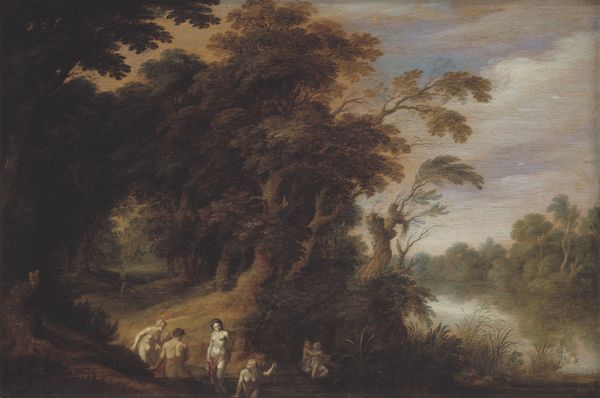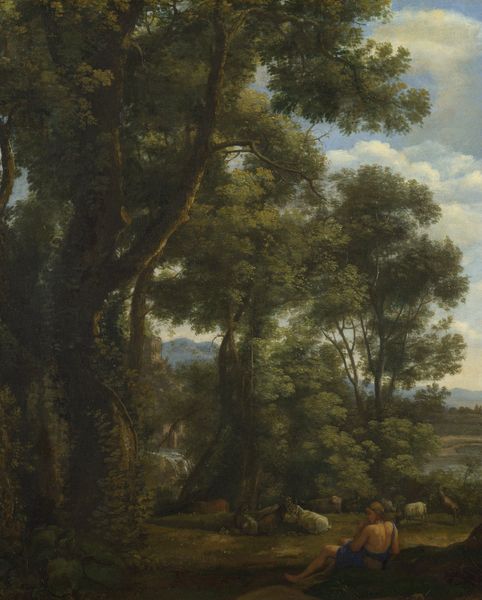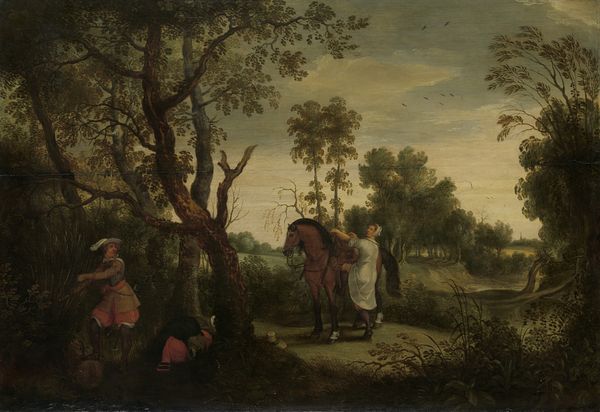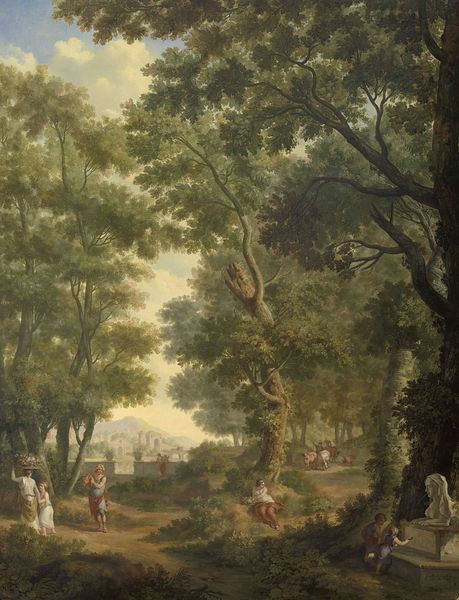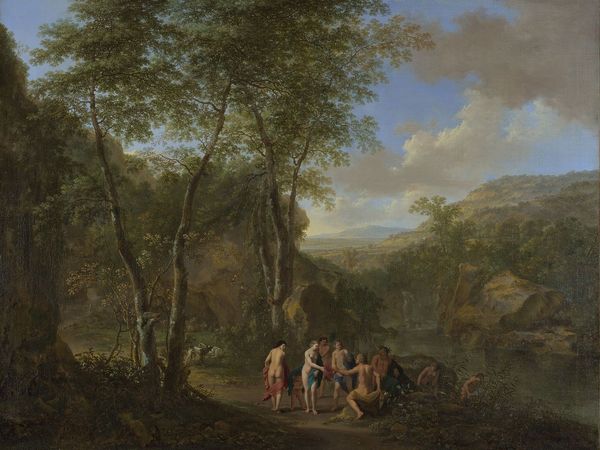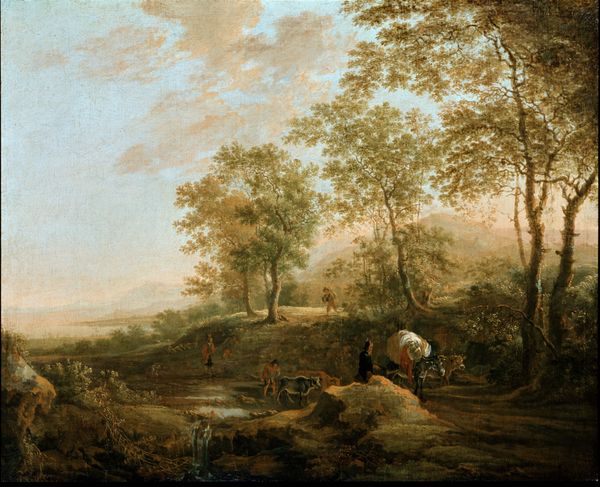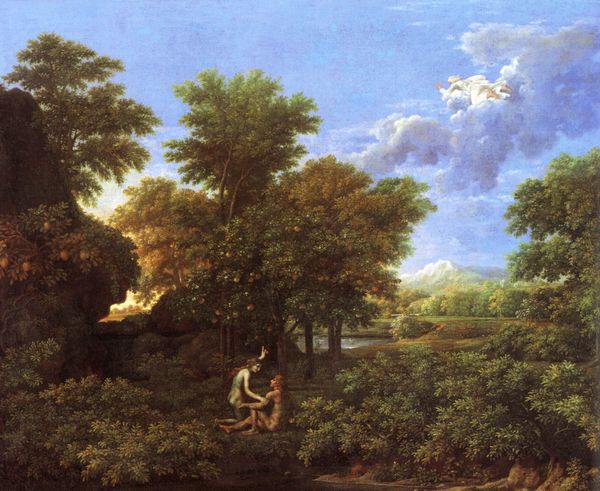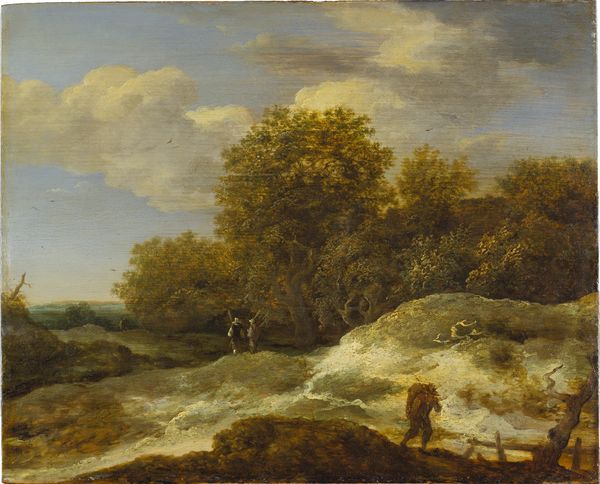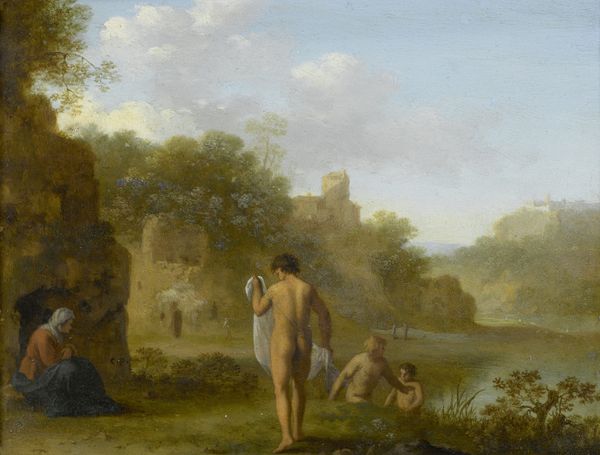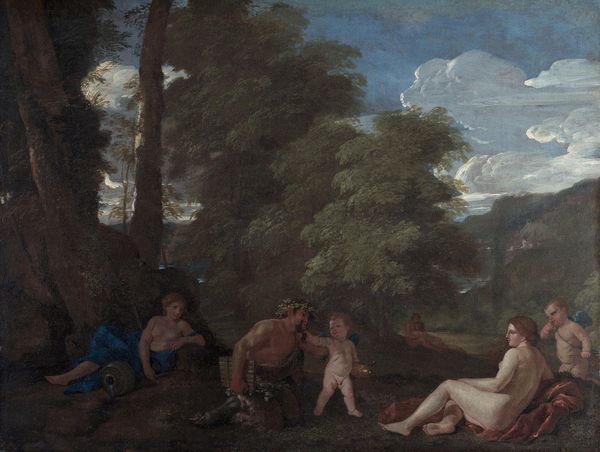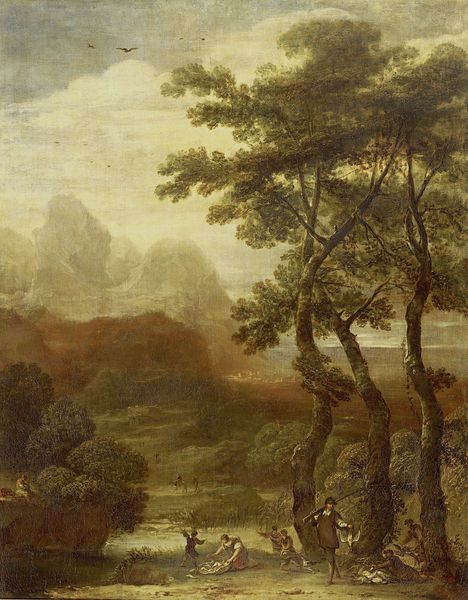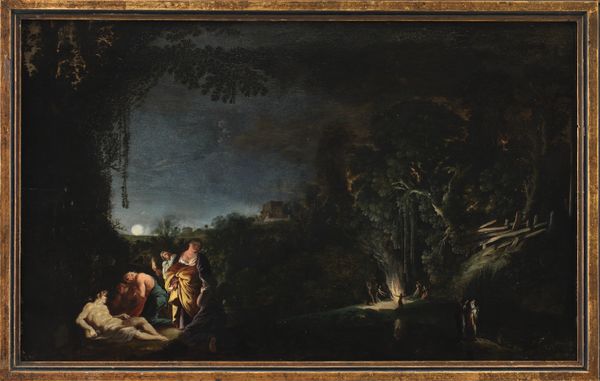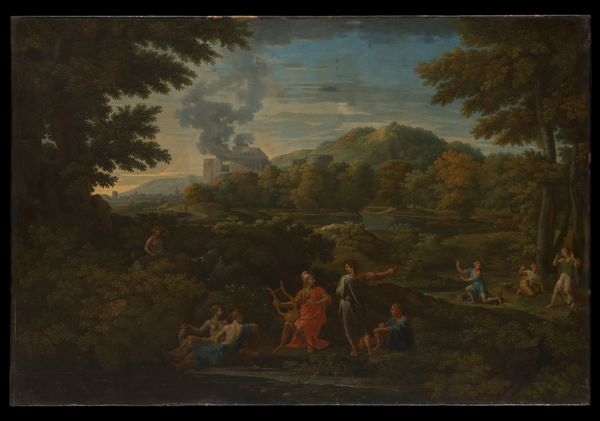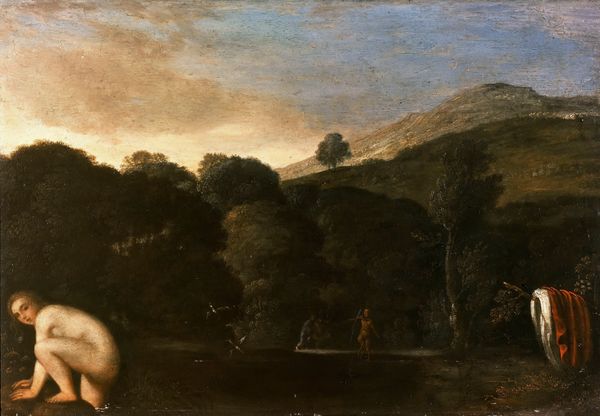
painting, oil-paint
#
water colours
#
baroque
#
painting
#
oil-paint
#
landscape
#
figuration
#
classicism
#
genre-painting
#
nude
#
watercolor
Dimensions: support height 13.5 cm, support width 18 cm
Copyright: Rijks Museum: Open Domain
Editor: So here we have Cornelis van Poelenburch's "Bathing Girls," painted after 1646. It's an oil painting currently held at the Rijksmuseum. What strikes me most is the casual sensuality in a pastoral setting. How do you read this piece? Curator: Well, let’s think about the materiality first. Oil paint allows for a layering that builds a sense of depth in the landscape, a kind of idealized nature. But consider the subject, women bathing. Where were these paints and materials sourced, and who had access to them? This wasn't just an exercise in artistry; it reflects economic realities and class structures. How do you think access to these materials shaped Poelenburch's work, and its potential audience? Editor: That's an interesting point. It does seem the work might appeal to wealthy patrons who could afford to commission such a piece. But, wouldn't those patrons also dictate some aspects of the composition? Curator: Precisely! Patronage influenced not only the subject matter, the idyllic fantasy, but also the labor that went into the painting itself. The work then becomes both an object of aesthetic appreciation *and* a record of social relations. Think about the “genre painting” aspect. How does framing it as "genre" versus, say, “history painting,” impact its value and its consumption? Editor: I guess that shifts the focus from some grand narrative to a more domestic, personal experience? And maybe even reduces its perceived importance or intellectual weight. Curator: Exactly! It makes the subject matter less imposing, but we need to consider the societal consumption of idealized, sexualized forms; it's deeply entrenched in the production and consumption of art then, as it can be now. Editor: I see that now. Looking at the art through the materials and labor involved, I hadn't really considered how class and commerce affected the subject matter itself. Curator: And that is what focusing on the material reality offers us – another dimension in which to understand art and its place in society.
Comments
No comments
Be the first to comment and join the conversation on the ultimate creative platform.
